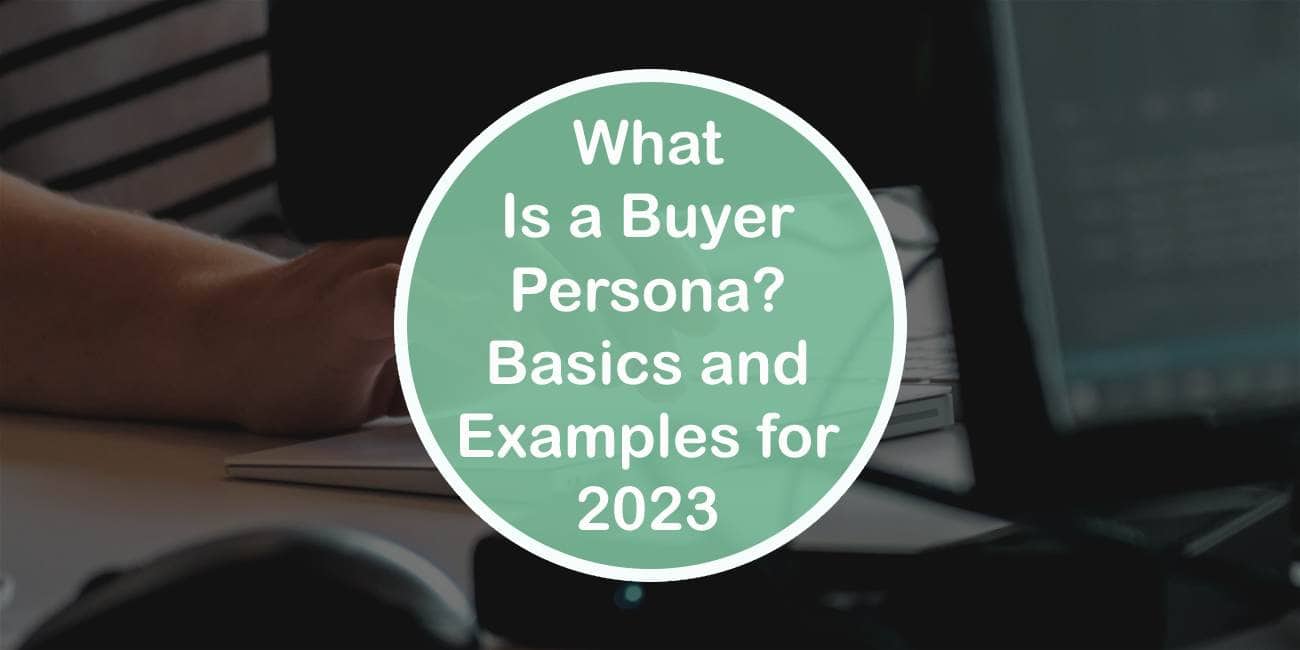In today’s digital world, understanding your target audience has become more important than ever before. This is where the concept of a buyer persona comes into play. A buyer persona is a semi-fictional representation of your ideal customer based on market research and real data about your existing customers. In this article, we will discuss the basics of a buyer persona, and its importance, and provide examples of how to create one in 2023.

What Is a Buyer Persona?
A buyer persona, also known as a customer avatar or marketing persona, is a fictional representation of your ideal customer. This representation is based on data collected from your existing customers, market research, and other relevant sources. A buyer persona helps you understand your target audience better and enables you to tailor your marketing strategies to their needs, preferences, and behaviors.
Why Is a Buyer Persona Important?
A buyer persona is important for several reasons. Firstly, it helps you understand your target audience and their needs. This enables you to create marketing messages that resonate with them and address their pain points. Secondly, it helps you identify where your ideal customers spend their time online, so you can reach them through the right channels. Thirdly, it helps you make informed decisions about product development, pricing, and distribution. Lastly, it helps you measure the effectiveness of your marketing campaigns and optimize them for better results.
How to Create a Buyer Persona?
Creating a buyer persona involves several steps. Here are the basic steps to create a buyer persona in 2023:
1. Conduct Market Research
Conducting market research is the first step in creating a buyer persona. This involves gathering data about your target audience’s demographics, psychographics, behavior patterns, and pain points. You can gather this data through surveys, interviews, online analytics tools, social media listening, and other relevant sources.
2. Segment Your Audience
Once you have gathered data about your target audience, segment them into different groups based on their characteristics. This segmentation helps you create specific buyer personas for each group.
3. Create a Persona Profile
After segmenting your audience, create a semi-fictional representation of your ideal customer. This persona profile should include information about their demographics, behavior patterns, interests, pain points, and buying habits. You can create a personal profile using templates, such as Hubspot’s Make My Persona tool.
4. Validate Your Persona
After creating your buyer persona, validate it by comparing it with real data from your existing customers. This helps you ensure that your persona is accurate and represents your target audience.

Examples of Buyer Personas:
Here are some examples of buyer personas for different industries:
1. SaaS Company
John, the startup founder. John is a male in his mid-30s who runs a tech startup. He has a small team and is looking for affordable, easy-to-use software solutions that can help him manage his business. He is tech-savvy but has limited time and resources. John values customer support and wants a product that can help him scale his business quickly.
2. eCommerce Company
Sarah, the fashionista. Sarah is a female in her mid-20s who loves fashion and shopping online. She is active on social media and follows fashion influencers. Sarah values style, quality, and affordability. She is looking for a seamless online shopping experience with fast shipping and easy returns.
3. Healthcare Company
Mary, the caregiver. Mary is a female in her mid-40s who cares for her elderly parents. She is looking for healthcare products and services that can help her manage her parents’ health conditions. Mary values reliability, affordability, and ease of use. She is looking for a healthcare provider that offers personalized support and advice.
In conclusion, creating a buyer persona is a critical step in understanding your target audience and tailoring your marketing strategies to their needs, preferences, and behaviors. By conducting market research, segmenting your audience, creating a persona profile, and validating your persona, you can create an accurate representation of your ideal customer. This helps you create effective marketing messages, identify the right channels to reach your audience, and make informed decisions about product development, pricing, and distribution.
In today’s digital age, understanding your target audience is more important than ever. A buyer persona is a tool that helps you achieve this understanding and create effective marketing strategies. By following the steps outlined above, you can create a buyer persona that accurately represents your target audience and helps you achieve your marketing goals.

